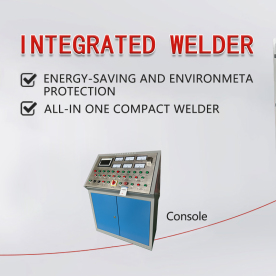[Precision induction heating equipment]Understanding Precision Induction Heating Equipment: Revolutionizing Industrial Heating Processes for Enhanced Efficiency and Accuracy
News 2024-7-20
****The manufacturing and industrial sectors are continually evolving, with technological advances paving the way for improved efficiency, precision, and sustainability. One of the most notable innovations in this realm is precision induction heating equipment. This technology is reshaping the landscape of how industries approach heating applications, particularly in metalworking, manufacturing, and other high-precision requirements.
**What is Precision Induction Heating?**
Precision induction heating is a process that uses electromagnetic induction to heat materials, primarily metals, with remarkable accuracy and control. It involves generating an alternating magnetic field that induces eddy currents within the conductive material, resulting in heating. This process is highly efficient and can be precisely controlled, allowing for targeted heating of specific areas without affecting the surrounding materials.
The key attributes of precision induction heating equipment include its ability to achieve rapid heating, precise temperature control, and selective heating of materials. This technology is often employed in applications such as hardening, annealing, melting, brazing, and soldering, where exact temperature specifications are critical.
**Advantages of Precision Induction Heating Equipment**
1. **Efficiency**: One of the most significant advantages of precision induction heating equipment is its efficiency. Traditional heating methods, such as gas or resistance heating, can waste energy by heating the entire surrounding area. In contrast, induction heating targets only the part being processed, minimizing heat loss and maximizing energy usage. This increased efficiency can translate into significant cost savings in energy consumption.

Understanding Precision Induction Heating Equipment: Revolutionizing Industrial Heating Processes for Enhanced Efficiency and Accuracy
3. **Precision**: Precision induction heating equipment allows for meticulous temperature control, minimizing the risk of overheating or damaging materials. The ability to select specific heating zones means that different areas of a part can be heated to varying temperatures, enabling advanced manufacturing techniques and enhanced product quality.
4. **Safety**: Traditional heating methods often pose greater risks due to open flames and high temperature surfaces. In contrast, induction heating minimizes these hazards. There are no exposed heating elements, and the equipment typically remains cooler than the materials being heated, reducing the risk of burns and fire.
5. **Versatility**: Precision induction heating equipment can be adapted for various applications and materials, from small parts to large assemblies. This versatility makes it an invaluable tool in numerous industries, including automotive, aerospace, tooling, and electronics.

Understanding Precision Induction Heating Equipment: Revolutionizing Industrial Heating Processes for Enhanced Efficiency and Accuracy

Understanding Precision Induction Heating Equipment: Revolutionizing Industrial Heating Processes for Enhanced Efficiency and Accuracy
The applications of precision induction heating are vast and varied. In the automotive sector, it is used for hardening gears, shafts, and bearings, ensuring they meet the high-performance standards required. In aerospace, induction heating is applied in manufacturing and repairing components that demand exceptional precision and quality.
In the electronics industry, precision induction heating equipment is utilized for soldering circuit boards and components, ensuring reliable connections without damaging sensitive electronic parts. Moreover, the energy sector employs this technology for processes such as pipe welding and joiners in oil and gas applications.
**Future Prospects of Precision Induction Heating**
The future of precision induction heating equipment looks promising as industries continue to seek more efficient, precise, and cost-effective solutions. With the ongoing advancements in technology, including the integration of artificial intelligence and automation, induction heating systems are expected to become even smarter, optimizing heating processes and minimizing errors.
As industries prioritize sustainability, the energy efficiency of induction heating provides a compelling reason for its widespread adoption. Manufacturers are increasingly aware of their carbon footprints and the importance of sustainable practices, and precision induction heating aligns perfectly with these goals.
**Conclusion**
Precision induction heating equipment represents a significant leap forward in industrial heating technology. Its advantages of efficiency, speed, precision, safety, and versatility make it an indispensable tool in various high-demand industries. As technology continues to evolve, so too will the applications and capabilities of precision induction heating, shaping the future of manufacturing and industrial processes. Embracing this advanced technology will empower industries to achieve greater accuracy, optimize operations, and enhance product quality, ultimately leading to a more efficient and sustainable future.
